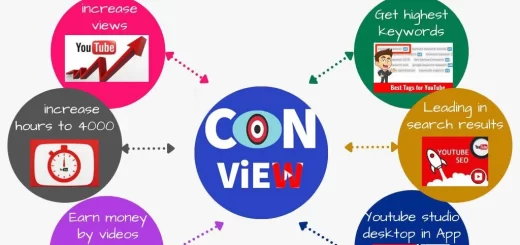Pros and cons of technology in education and Can technology replace teachers?
Technology tools present universal tools that enable teachers to educate all types of students, including those who are struggling or have special needs, These include voice recognition, text-to-speech converter, translator, volume control, word prediction software & other assistive technologies, There are many resources for education & making learning more fun & effective, There are many apps, e-textbooks & organizational platforms.
Advantages of Educational Technology
Technology helps the students make the task of learning easier and allows for the product creation that would once have been impossible, Students had to venture to the library & sort through stacks of books to find the information, With the aid of technology, they can gather the information almost instantly, Because the Internet allows students to gather the information more rapidly, and teachers can commonly squeeze more learning into their lessons.
Incorporating technology into the classroom helps the students to access different ways of learning, they’ll explore & try different techniques, Students can make modifications digitally, adding sections, correcting spelling, or moving the elements of the paper by using technology, They can edit more efficiently and save time.
Teachers can enhance their lessons with technology, Instead of relying only on the textbook, teachers can use technology tools to present movies or audio recordings, locate & print out related articles or create slideshow presentations to accompany lessons, As technology makes supplementary material easier to gather & use, Teachers can offer educationally-rich supplementary materials to their students.
Technology helps students with special needs to thrive in academic settings, They can use adaptive word processor apps & programs that speak for children who struggle with language, Educational technology allows students to communicate and be involved with their teachers & classmates, Technology in the classroom is not meant to replace the teacher, the idea is to create a flexible learning environment that breeds innovation.
Educational technology allows students to communicate with others across the globe, Through email, chat rooms, discussion boards & other digital communication methods, students can exchange ideas & information with others, Technology tools allow for the development of an extensive community of learners all working towards the accomplishment of the same goal.
People of all social strata can use technological advances, technology tools help students have instant access to fresh information that can supplement their learning experience, Technology tools can prepare students for a future that will be digital & technology-focused, and students are well-versed in using technology to collaborate & communicate.
Using technology in the classroom allows for more active learning, you can increase engagement through online polling or asking quiz questions during lectures, Technology tools in the classroom help ensure full participation, Online polling and other tools help to engage all students, Online engagement systems allow you to regularly check in with students for feedback on course materials & assignments.
Technology tools can automate a lot of your tedious tasks, Automation can speed up tedious, time-consuming tasks, such as keeping track of student attendance & performance, Engagement tools can help streamline grading for writing assignments, discussions & participation, as well as answer common student questions, that otherwise could seem daunting due to their objective nature.
Technology tools promote independent learning to students, The internet is full of a treasure trove of information, it can serve as an educational resource for students, Even without assistance from parents and teachers, and students can look up their lessons online, Electronic books & web-based content are updated in real-time, feeding the students with the most current information, helping them become more knowledgeable even outside the classroom setting.
Educational technology has the potential to lower textbook & tuition prices, With resources more accessible and in great abundance, the cost of textbooks is likely to decrease, Tuition will decrease when learning is done online, By taking out the factors that contribute to a higher tuition fee, such as utility bills & transportation allowance of teachers, the overall cost of education will be lower.
Technology allows teachers to create an exciting way to educate students, teachers can now incorporate images, videos & other graphics when delivering lessons, Specific websites, apps & programs will enable teachers to vary how they provide instructions.
There are many tools available including Smart Boards (interactive whiteboards), email Skype, and PowerPoint, The teachers & professors have the option to use advanced teaching methods, such as podcasts, blogs & social media, The teachers can take benefit of web conferencing technologies & other online communication tools.
Cons of Educational Technology
Technology tools in the classroom can be a distraction, Students learn less when they use computers or tablets during lectures, and they tend to earn worse grades, Laptops distract from learning, both for users and for those around them, Between a tablet & a textbook, students are likely to gravitate towards learning when reading a book, while they are likely to use a tablet to play games or spend time on social media.
Technology tools can disconnect students from social interactions, They can foster cheating in class & on assignments, and students can find ways to cheat, the digital age makes it even easier to copy and paste someone else’s work to hire an essay writer from online essay websites.
All students don’t have equal access to technological resources, Some students can’t afford iPads or even the textbooks required for the class, For these students, You have to point them in the direction of the library or community resources, or create assignments that allow them to work in groups & share resources, You should not make technology the focus of your class, and don’t make it a barrier.
Research & sources quality may not be top-notch, and students may need guidance on identifying proper sources and unreliable sources, Many campuses have writing centers that can help with this, You can use the open educational resources in the public domain that anyone can freely use, copy & adapt, they range from textbooks to lecture notes, examinations & assignments.
Some children don’t have computers and other technology tools because of socio-economic status, This puts these children at a disadvantage in learning technological functions, Teachers can use digital movies or multi-media presentations, Many classrooms are being retrofitted with smartboards & computers but they can’t replace old methods of teaching.
Educational technology results in a lack of interest in studying, Everything is accessible online or through data saved on a computer or mobile device, So, students are likely to develop poor studying habits and a lazy attitude towards education, Some students think that they can skip school because they can find answers & lessons online.
Students may forget the basics of studying, They rather rely on computers and the internet, instead of their books and the input from their teachers, They use spell checkers, they would seek assistance from the computers or look for the answers directly through search engines to solve mathematical equations.
Technology makes students vulnerable to potential pitfalls, While computers prove to be an invaluable educational tool, it can be a source of problems, This is especially true for students who lack the skills needed to maximize a device’s functionalities, Technical problems & computer malfunctions can cause loss of assignments & other materials, resulting in high levels of stress that students would rather not experience, Difference in internet speeds & device’s capabilities can lead to certain difficulties that will de-motivate students.
Many teachers believe that constant use of digital technology is affecting a student’s attention and his ability to persevere when a challenging task is thrown on his way, Although such belief is subjective, scholars, experts & teachers all agree that technology has changed the way students learn.
The importance and uses of educational robotics for students




very good